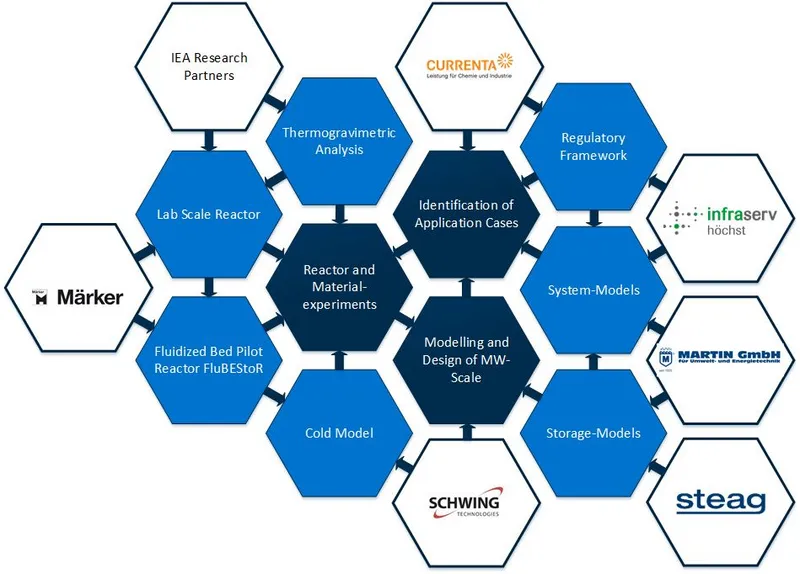TWIST – Fluidized Bed based Thermochemical Energy Storage for Industrial Applications and Power Generation
Motivation
In the course of the energy transition, thermal storage systems gain further in importance, as they can increase both, the efficiency and the flexibility required for the energy system. In the previous BMWi-funded project "TcET", a high-temperature heat storage system has been developed at LES, based on the thermochemical couples CaO/Ca(OH)2 and MgO/Mg(OH)2. In order to ensure a good mass and heat transfer, the reaction was implemented using a fluidized bed process. Decisive progress has already been made in the design and technical implementation, and the "TWIST" project is now building on this acquired knowledge.
Goals
The main goal of TWIST is to further develop the thermochemical storage technology from pilot scale to pilot scale. By means of model development and process analysis, previously unused energy efficiency and flexibility potentials in industry are to be identified which can be exploited through the use of heat storage systems. In combination, this should enable the rapid market introduction of thermochemical storage systems. The heat transfer onto the storage material plays a key role also in this storage system. During previous investigations, this heat transfer in the fluidized bed has emerged as a decisive cost driving aspect for the reactor concept. Therefore, the following key aspects will be pursued within this project:
- Definition of correlations for the heat transfer in the fluidized bed
- Design of reliable storage models at planning tool level
- Determination of concrete data for the identification of meaningful application cases in industrial processes
In this project, a broad project approach is pursued, starting with the further development of the storage technology through to the identification of applications for a pilot plant. The three bottlenecks mentioned above will be addressed synergistically. The overall focus is ultimately on application-oriented further development of continuously operated thermochemical energy storage systems with calcium and magnesium oxides, which enable separate scaling of storage power and capacity.
